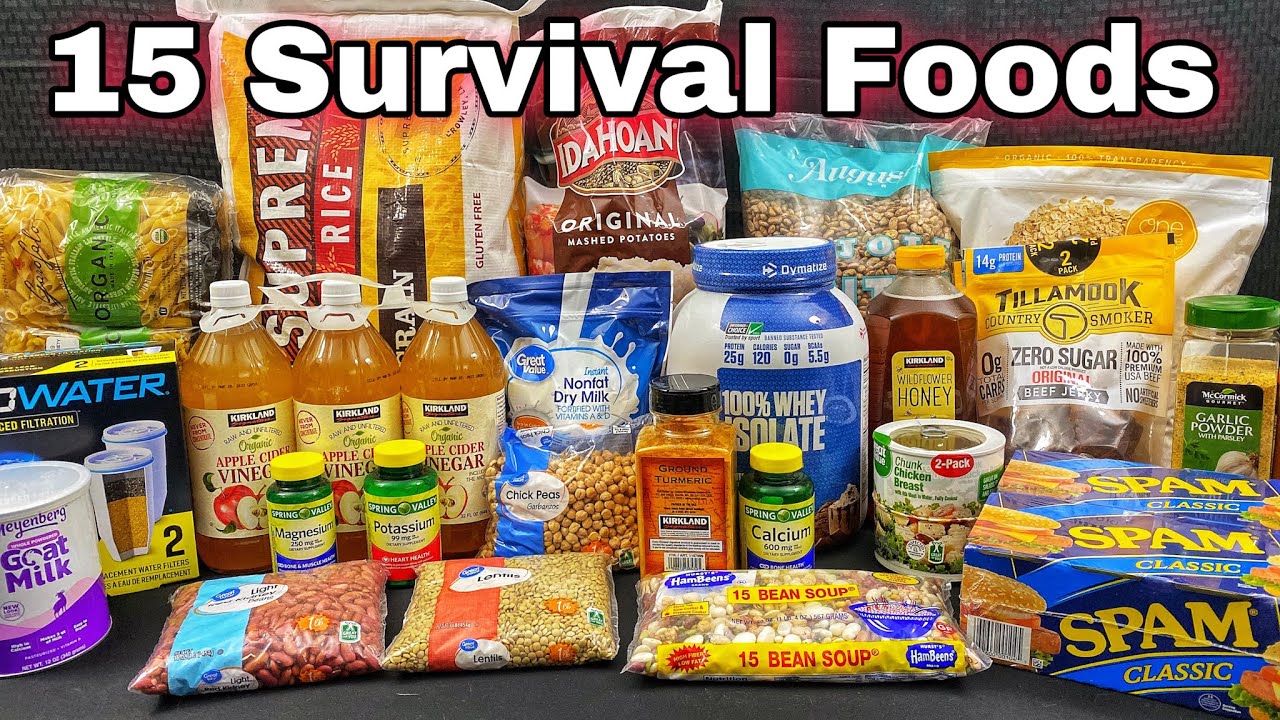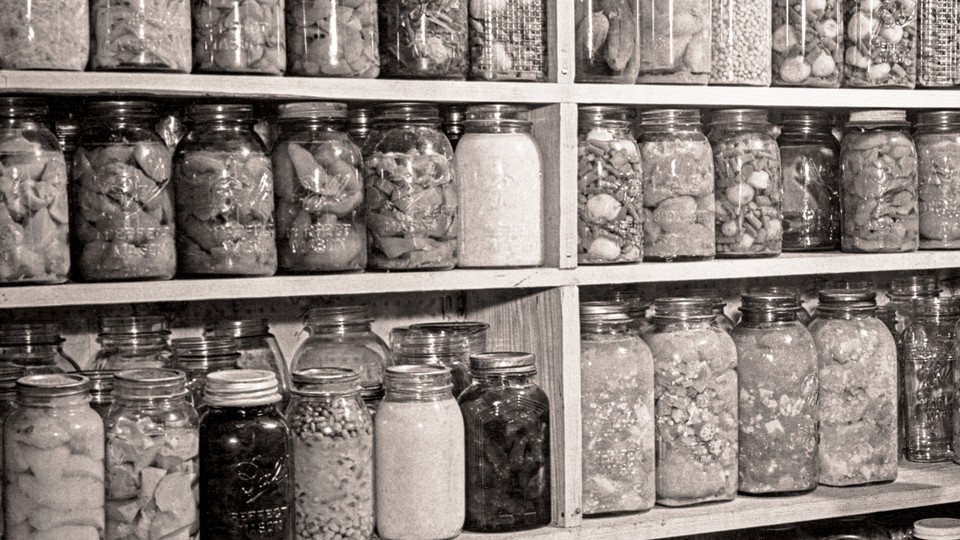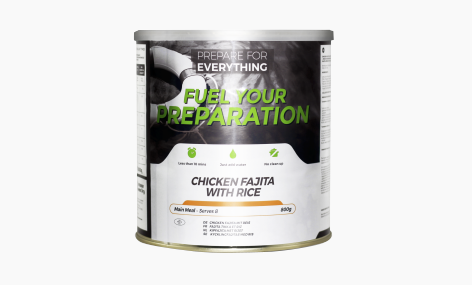
Prepare food in advance to ensure you're prepared for natural or emergency situations. Plan ahead. A survival kit will help you make quick and easy meals, as well as helping you to maintain a healthy weight. Preppers store food in containers. Some people keep a huge pantry of food, which is useful for quick meals. There are many products that you can choose, regardless of how much food storage you have.
Preppers should have spice, salt, pepper and garlic. They are a great source of nutrition and have a long shelf life, making them an excellent choice. You can also store herbs and spices in storage to make sure they don't spoil. These items can be perishable, but it is worth keeping them on hand.

There are many meat choices available for preppers. Beef, turkey, pork, and poultry are all good options. Canned fish, shrimp, and salmon can be used to make elegant salmon croquettes. Can you make sushi musubi with canned coconut milk? Even if you are limited on space, it is possible to cook your own food. You should always have enough food for the family, including beans and grains.
A canful of pemmican is another great option for preppers. Pemmican is a great option for quick meals because it has a lot of protein. A can of tuna is a good option for survival situations. These can be purchased online at a reduced price. Cannellini corn is GMO, so avoid it as it can be a calorie bomb.
There are many other foods you can store for long term storage. Canned fruits and vegetables, for example, are very easy to store. Canned meat is another option. The meat can be prepared quickly and stored in cans for long-term storage. It is a great source protein. If you don’t have one, store canned goods in the refrigerator.

It is possible to buy bulk survival food kits and keep them for many years. Foods that are freeze-dried can last the longest, depending on their nature. Whole wheat berries or flour are two options that can be easily stored and reheated. For a longer-term supply, it's best to buy food that is already inexpensive. Basic foods and canned goods are best to store when you're just starting out. You should also stock up on water.
Prepping food should be purchased in bulk. Fortunately, they are always on sale. Amazon offers great deals on prepping food. Preparing bulk orders can help you save both time and money. A few things to remember before buying prepper foods: Know your family's food consumption and food storage habits. You can survive an emergency with a food-storage plan. It will ensure that your family is well fed and comfortable.
FAQ
What are the benefits of hunting?
Many cultures have long practiced hunting. It was used for food, clothing, shelter, tools, medicine, and other purposes. In modern times, people still hunt for sport, but also for food and recreation. Hunted animals' meat is often consumed right after being killed. The skin, fur and feathers of the animal are then eaten, along with any other parts such as their antlers, horns or teeth.
Hunting isn’t just about eating, it’s a way that you can live.
Hunting is a sport that builds strong bonds between family members and friends. They share their stories and memories over meals and around campfires.
Hunters love nature and wildlife which allows them to appreciate life on Earth.
When they look after game animals, they are taught responsibility and respect.
Conservation helps hunters be better citizens. They work to protect habitats, species, and the environment. They are able to understand the amount of land and water that is necessary for survival.
Hunters form part of a wider community. Their families depend on them. They are there for each other. They support local businesses.
Hunters give back to society as well. Many hunters donate money to charities that assist children, the elderly, and veterans, among other causes.
Hunters also have the opportunity to give their time to assist those in crisis. They could volunteer with the Red Cross, Humane Society or Humane Society.
How much does it take to become a hunter
Hunting costs can vary depending upon where you live.
You may not need to pay much to gain access to public lands in some areas.
Some states require permits or licenses before you may hunt.
Hunting costs vary depending on what type of firearm you choose. A rifle is usually more expensive than a shotgun.
The cost of a license ranges from $10 to $50. You might need to purchase additional tags depending on the amount of hunting days you have.
You will need a permit in order to hunt certain species. The amount of money you need to buy depends on the size of the animal you intend to kill.
You will need to spend up to $150 to hunt wild turkeys.
The U.S. Department of Agriculture (USDA), estimates that about 1 percent of hunters kill deer each year.
The USDA estimates that approximately 6.5 million Americans hunt buck. Of these, only about 2.2 million actually shoot one.
This means that about 0.6% of hunters kill a deer each season.
What is the most critical part of hunting wildlife?
How do we get there? You must first learn how to accurately shoot. Next, we need to learn how to hit the target. Then, it is time to learn how make adjustments when you miss.
Knowledge is key to hunting. It is impossible to improve your hunting skills if you don’t know what you’re doing. Even though you might feel that you have improved through better shots, it doesn't mean you will be any better. It's the same with hitting targets. It's impossible to understand why you're not hitting your targets. This means that it is essential to understand what your goal is.
This is where knowledge really comes into play. Your ability to hunt depends on your understanding of the animal you're trying to kill. If you go out into nature, you will want to be as knowledgeable as possible about the animals you come across. You should be familiar with their behavior, habits, and personalities. This way, you can plan your hunts so they go smoothly and efficiently.
You should always try to learn from others who have been successful in the past. You can find many books on the topic. In addition, there are websites like www.thehuntingzone.com that offer great tips and advice. There are also people with years of experience. They can help identify the best and worst practices.
Once you are confident in your knowledge, you can start to practice. Practice makes perfect. It's not enough to practice until you feel confident. Instead, you should practice until your confidence grows. Confidence helps you relax and enjoy the process. Relaxation makes it easier to concentrate on the task at-hand. You can capitalize on every opportunity that comes your way by concentrating. You can only be relaxed and focused when there are opportunities.
When you're ready to put your new skills to use, it's time to test them. Do not worry if your attempts fail. Don't worry if you fail. Just keep practicing. You will eventually achieve success.
Is it permissible to hunt bears here in Alaska?
Yes, you can hunt bears in Alaska. To capture bears some hunters use traps. Others use dogs or traps to track down bears.
The Alaska Board of Game regulates bear-hunting. Before going out in the woods, hunters need to have a bear tags.
Denali National Park Preserve, for example, is home to bear hunting. Tourists can even go on guided hunts to capture bears.
What kind of training should I get to hunt? How long is it?
To learn how to hunt, you must attend a basic course. This course will help you learn about different game types and the laws that surround hunting.
This course will teach you how to safely handle guns and ammunition. Instructions will also be provided on how to safely use these weapons.
The course can last anywhere from 2 weeks to 3 months. Some courses are offered online. Other courses are available in person.
A written test must be passed to become eligible for a licence. You may also need to show that you have completed a hunter education course.
What is the cost of getting licensed? What if there isn't enough money?
The cost to get licensed depends on where you live. The cost of licensing can range from $20 to more than $100.
You may be eligible to receive a grant or loan if your income is not sufficient.
In addition to the fee, you will need to purchase a tag. The price of tags varies depending on the game you are hunting.
There are tags available for bear, elk and moose as well as waterfowl, upland birds and furbearers, such as foxes.
Some states require you register at the Department of Natural Resources before applying for a license.
Before you go out hunting, make sure you check all local regulations.
Statistics
- Licenses dropped from a peak of roughly 17 million in the 1980s to 15 million in 2019, according to The Seattle Times. (stacker.com)
- - Percent of residents with paid hunting licenses: 0.7%- (stacker.com)
- Thanks to the 1937 Pittman-Robertson Act, an 11% excise tax was placed on the sale of firearms, which were then used for conservation. (stacker.com)
- Indiana, for example, saw a 28% jump in turkey license sales during the first week of the season. (stacker.com)
External Links
How To
How to choose the most desirable hunting spots in the forest
The first thing we should do when looking for good places to hunt is to know what kind of game we want to hunt. You will not find the right place to catch your desired animal if there are many species of birds and animals that live in forests.
The forest is home to two types of animals: small mammals and large mammals. The large mammals include deer, elk, moose, caribou, bear, wolf, and wild boar. Squirrels, rabbits, squirrels and hares are some of the small animals. Each species has its own habitat so it is important to choose the right spot before you venture out into the woods. You can check your local area's flora and fauna list online to see whether there are any endangered species living near your home. It is important to ensure that there are no poachers in the area you plan on hunting a specific species.
Knowing how to properly setup your equipment is essential if you plan to hunt a particular animal. Because it can affect your success rate, it is important to have the right equipment. For example, if you're hunting a rabbit, you'll need a gun that shoots accurately at close range, while if you're hunting a larger animal such as a deer, you'll need a rifle capable of shooting long distances. To attract prey, you will need some kind of bait. Some people recommend placing meat inside a trap to lure the animal, while others prefer using corn or peanut butter. No matter what method you use, you must adhere to the laws and regulations in the country you are hunting.
Consider the following factors when selecting a hunting spot: weather conditions, terrain and vegetation, wildlife population, accessibility, etc. When selecting a place to hunt, always remember that the most important factor is safety. Make sure that you select a place that is free from predators and dangerous animals. Avoid areas with too many people, especially during hunting seasons. You should also take note of the seasons when hunting because this will help you determine the best times to hunt.
Weather is an important factor when hunting. This is crucial because it influences the number animals that will be available. Winter is when temperatures drop below zero degrees Celsius and snow covers the ground. The thick snow layer makes it difficult for coyotes, bears, wolves, deer and other animals to be seen. These animals might still be visible if there is a clear day. In summer, temperatures can reach 30 degrees Celsius and the sun heats the earth. It is easier for animals to find shelter from the heat, as they move away from it.
You should also consider the terrain. It is easier to walk or run on a flat surface, but it can be difficult to do so on uneven surfaces. Steep slopes require more effort and can sometimes lead to muddy trails. You should find a place without obstacles so that you can travel easily.
It is important to look at the vegetation in addition to the terrain. The environment can affect the size and density of plants. Smaller animals will benefit from shade and shelter provided by large trees, while smaller animals will be sheltered and protected by shrubs and bushes. You should search for dense vegetation if you wish to find large animals.
Finally, you should also pay attention to the amount of wildlife. There are more than 100,000,000 deer in North America, according to statistics. They eat half of what crops produce and play an essential part in maintaining biodiversity. They can also become pests and endanger the ecosystem if their numbers grow too fast. Therefore, it is vital to keep the population balanced.